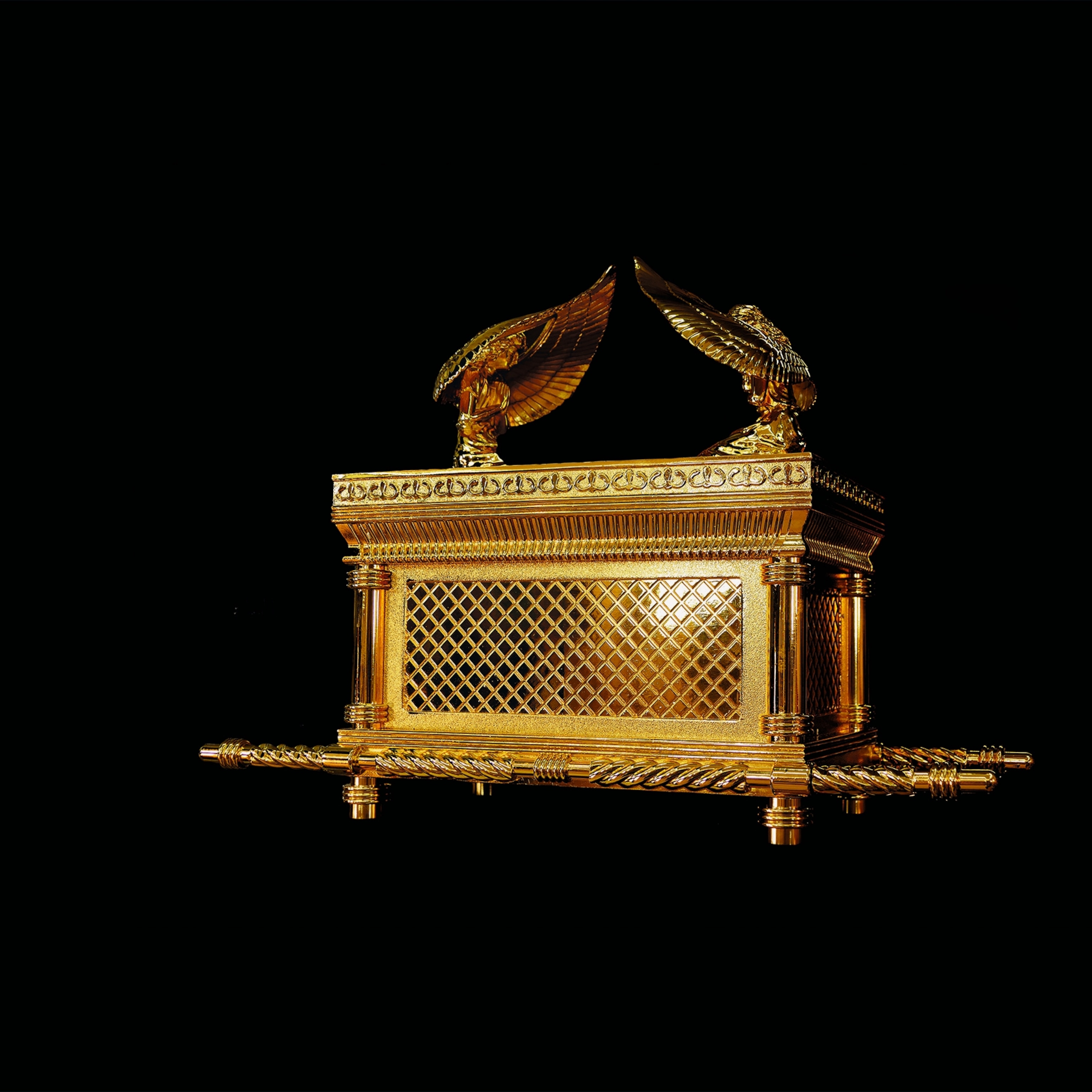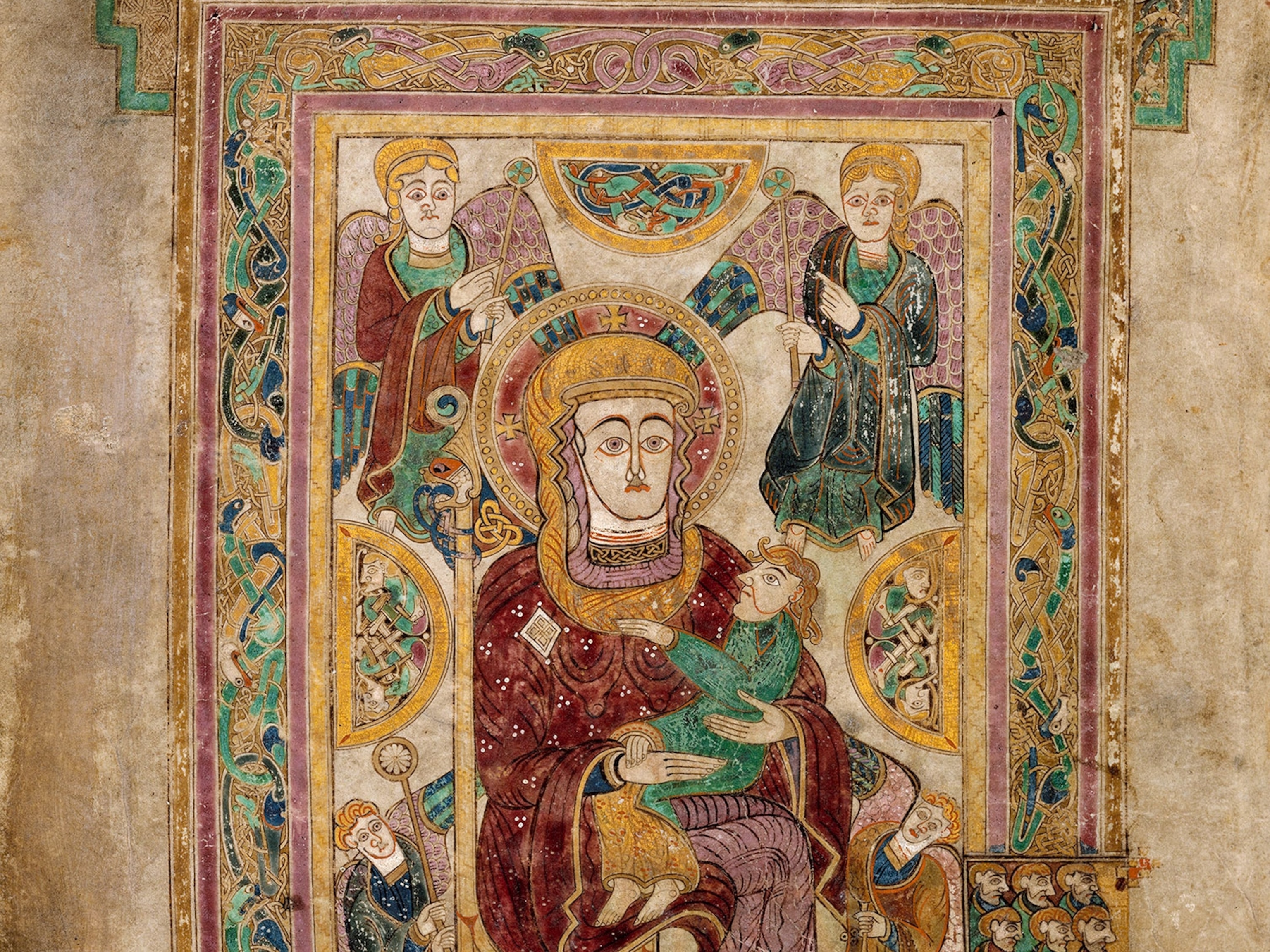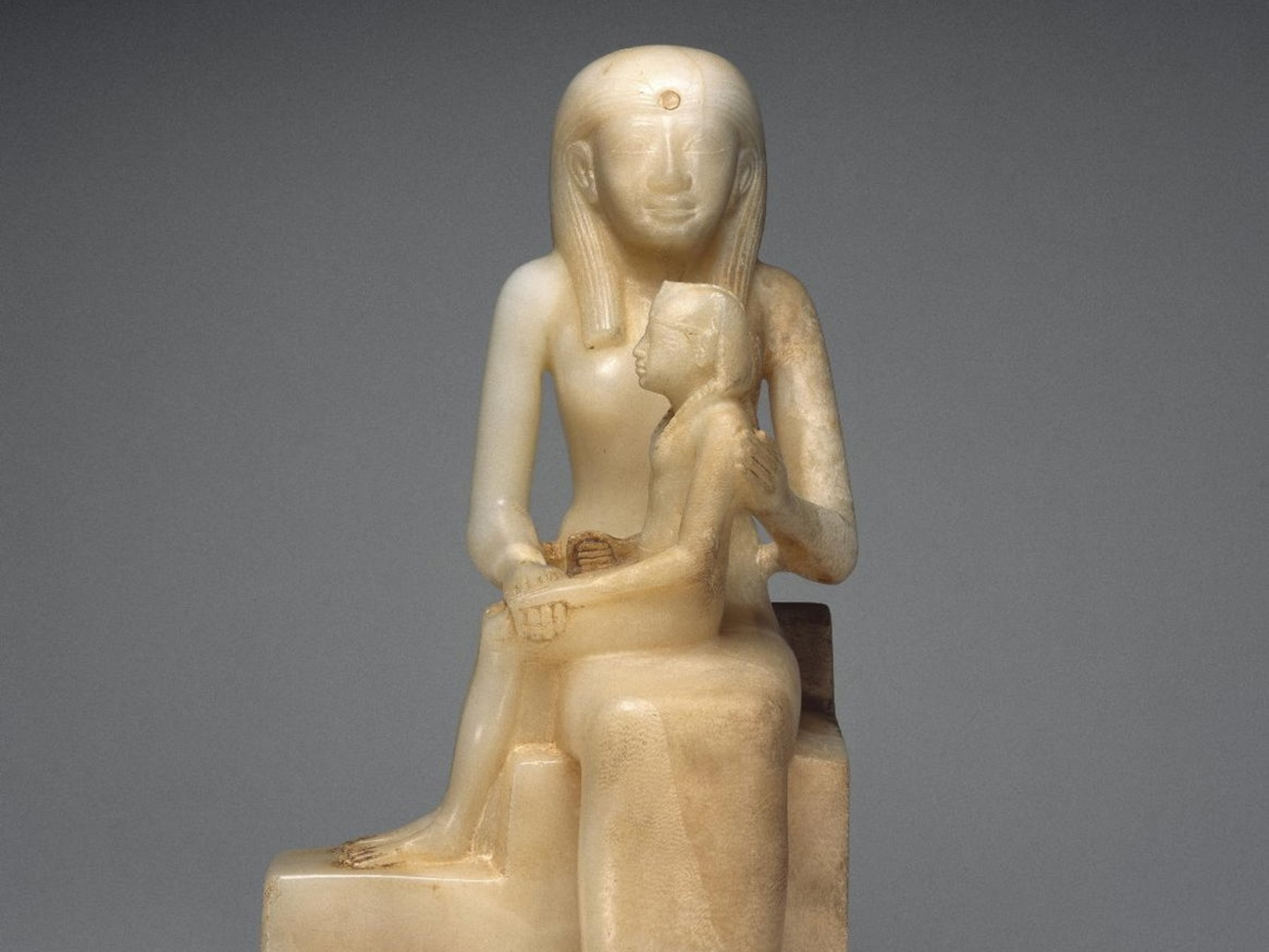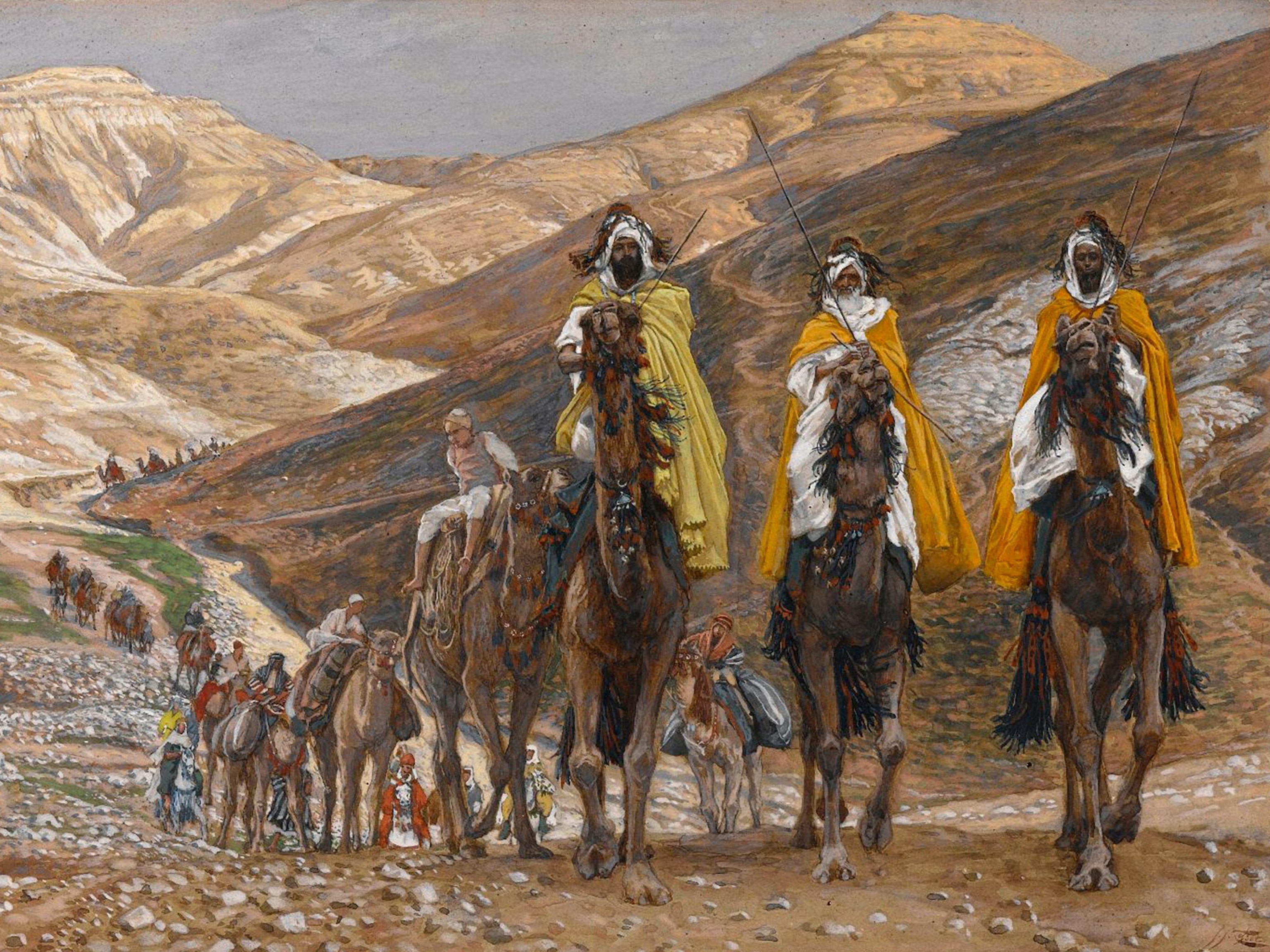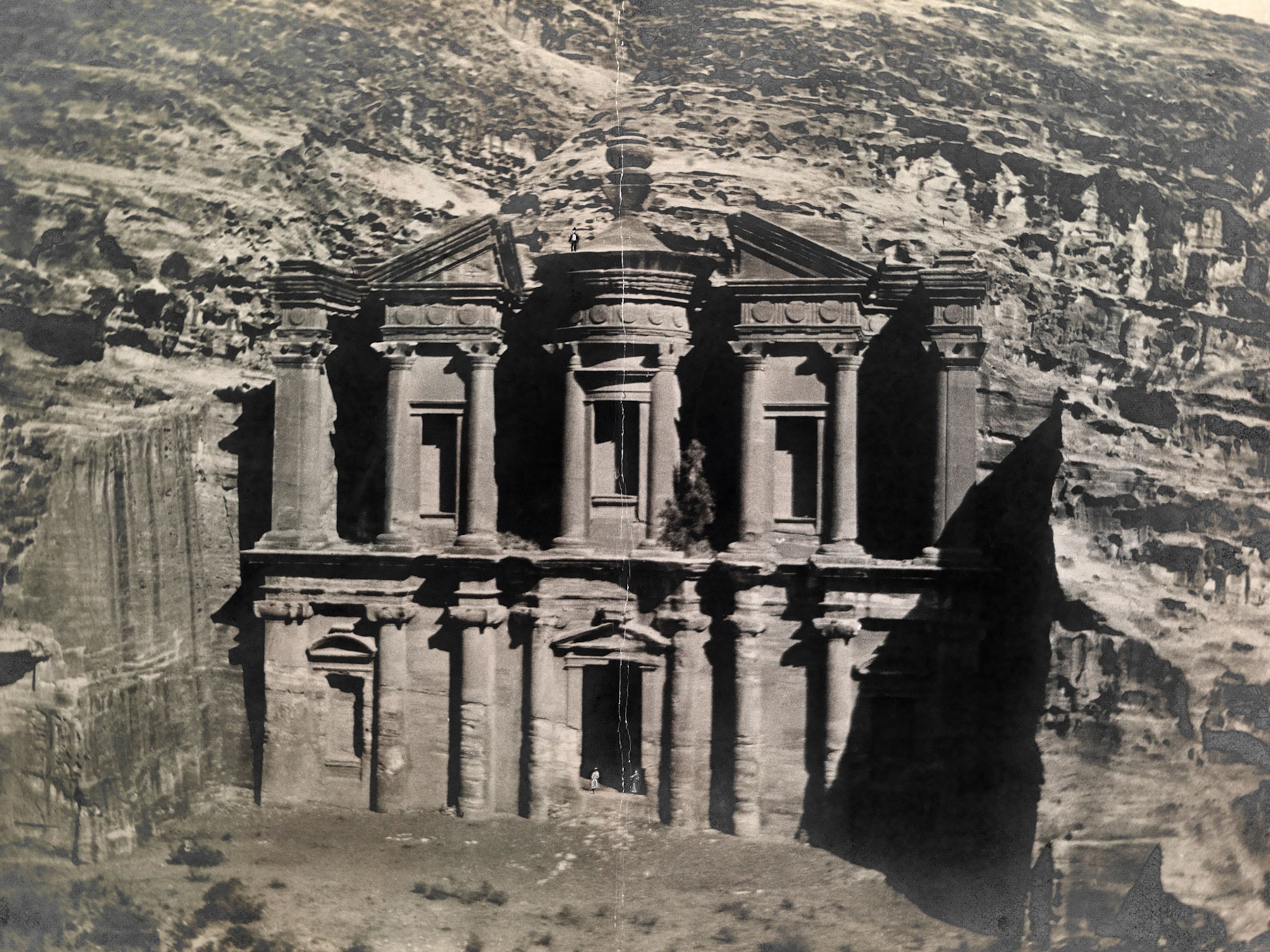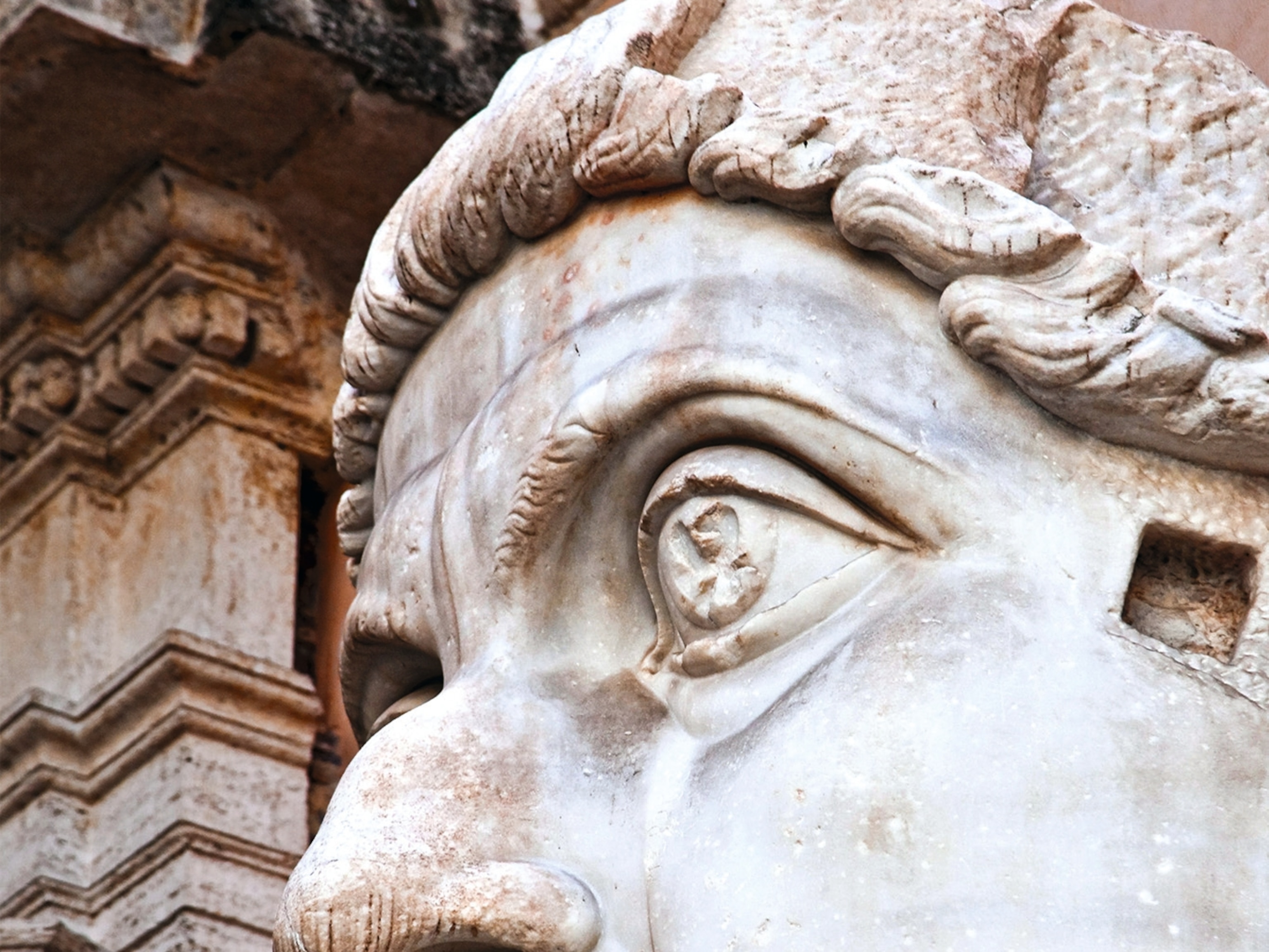Where falconry is a storied sport, these women are writing a new chapter
In the United Arab Emirates, one photographer sets out to document unseen figures in this beloved national tradition.
Abu Dhabi, United Arab Emirates — The rising sun spreads pale light over the desert sands, illuminating a scene at once common and unexpected: a solitary falcon, hooded and still atop its perch, ready for hunting practice.
While people in what is now the United Arab Emirates have trained falcons for more than 4,000 years, more surprising is the falconer—a woman, with a young daughter working beside her.
Historically used as hunting companions, falcons captured meat that couldn’t be killed with an arrow or trapped in a snare to augment the low-protein diet of the nomadic Bedouins on the Arabian Peninsula. Falcons are keen-eyed—they see eight times farther than a human—and capable of plummeting from the sky at over 200 miles an hour to catch small prey such as desert hares and houbara bustards.
Though no longer necessary as food suppliers, the raptors remain beloved by the people who own and train them, holding a revered perch in the country’s cultural heritage. Amid the fierce winds of globalization, falconry—which includes both racing and hunting exhibitions—has allowed practitioners to reconnect with their desert roots.
Another enduring fact: The prestigious national sport has been primarily associated with men, at least in the public eye. Yet photojournalist Vidhyaa Chandramohan knew women were there.
For centuries women have tamed and hunted with falcons in places ranging from Mongolia and Kazakhstan to the United States and the United Kingdom. And Emirati women are no less devoted, says Chandramohan, who has lived in the country for 16 years.
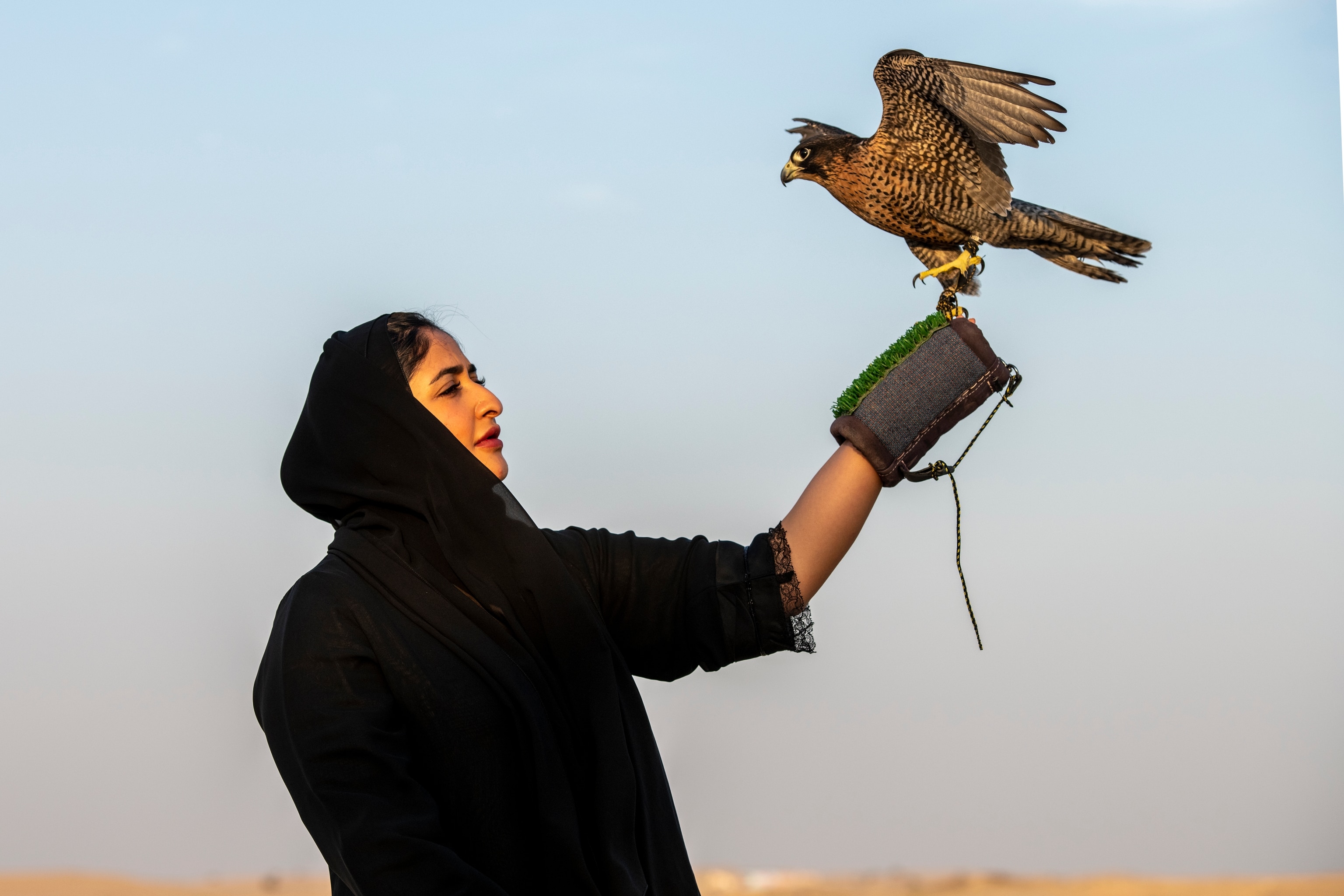
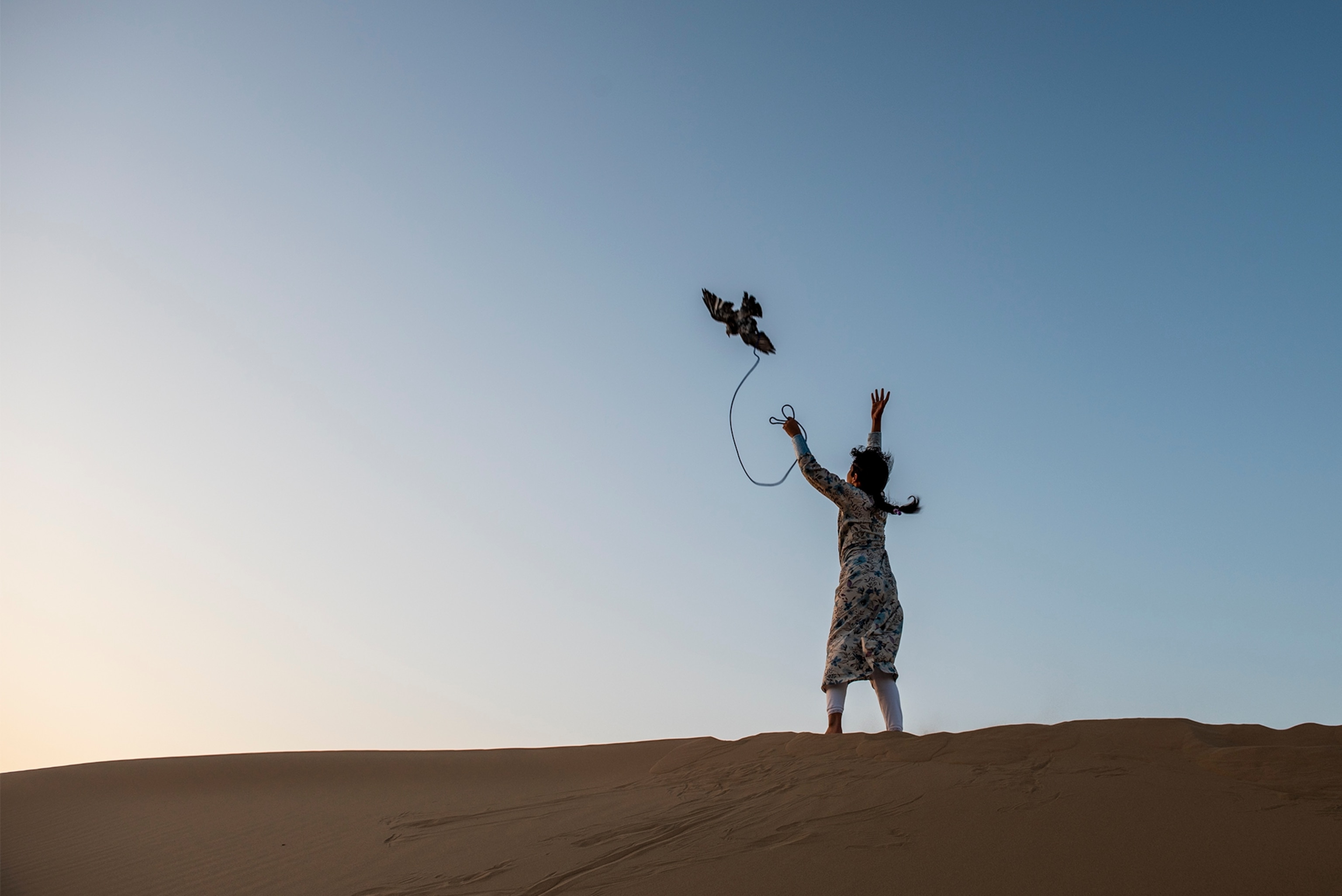
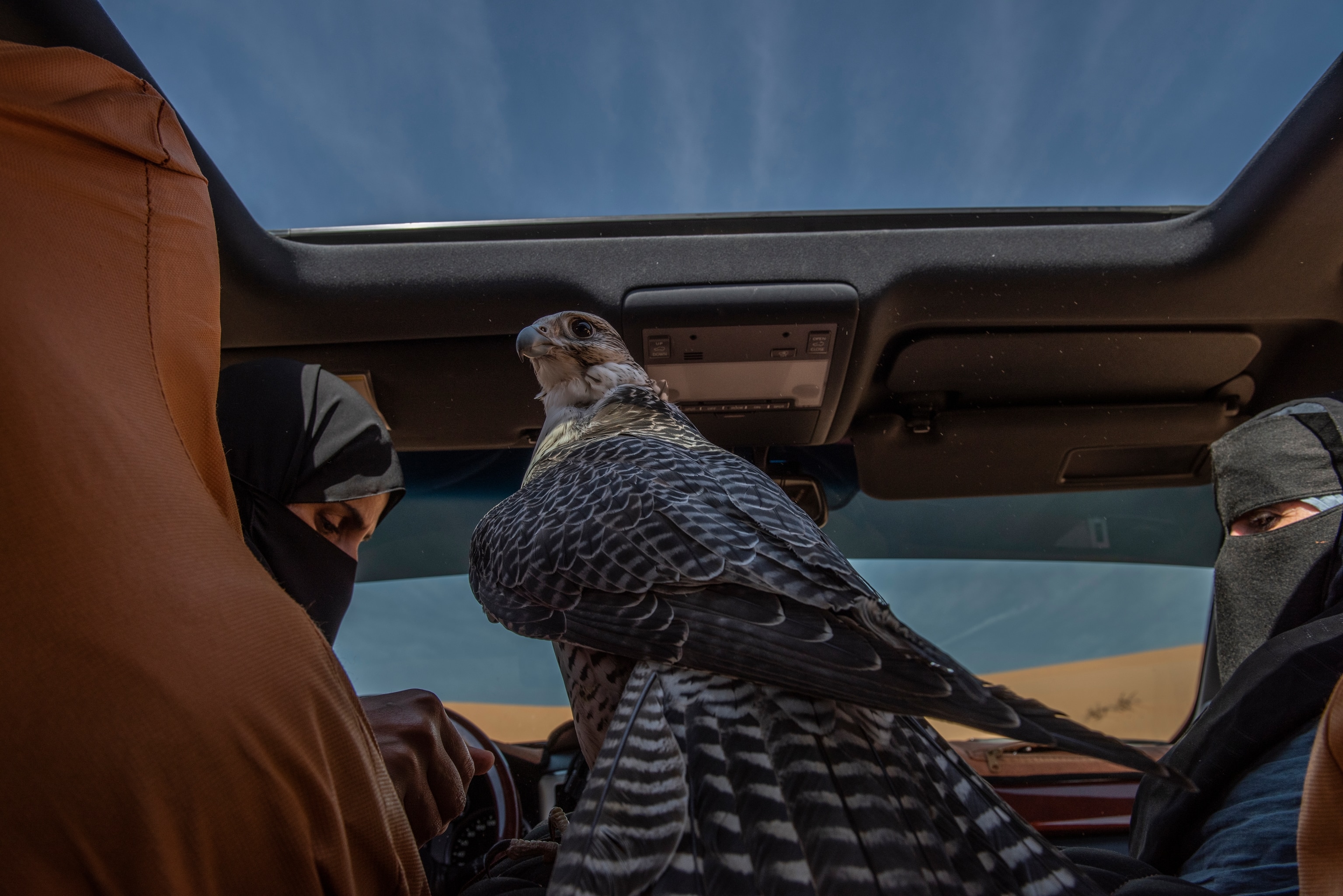
Revealing the Role of Women
Chandramohan began to search for female falconers to document their part in the tradition. She scoured social media for pictures and stories. When she came upon Ayesha al Mansouri, she knew she’d found a treasure.
Al Mansouri began to study falconry with her father when she was four. After her brother failed to wrestle a hood on a falcon and gave up, Al Mansouri tried—and eventually got it.
“’I just covered it,’ she recalls saying to her father. “He was stunned, and shot me glances showing he was proud and impressed.” The moment marked her entry into the world of falcons.
But in 2018, when Chandramohan approached the thirty-something falconer with a proposal to document her career, she was reluctant. Just as falconers must first earn a bird’s trust, Chandramohan realized she too needed to patiently gain Al Mansouri’s trust in order to tell her story in pictures.
Eventually she did. And when photographs of Al Mansouri and her daughter, Osha, now 8 and following in her mother’s footsteps, were published in media outlets and displayed as part of a photography festival, the public took note. Changing the perception of the sport would require a role model—Al Mansouri.
After that, “many women came to me and said that their grandmothers and aunts were practicing falconry,” says Chandramohan. “But my documenting this practice by capturing women as subjects was something new and unfamiliar to them.”
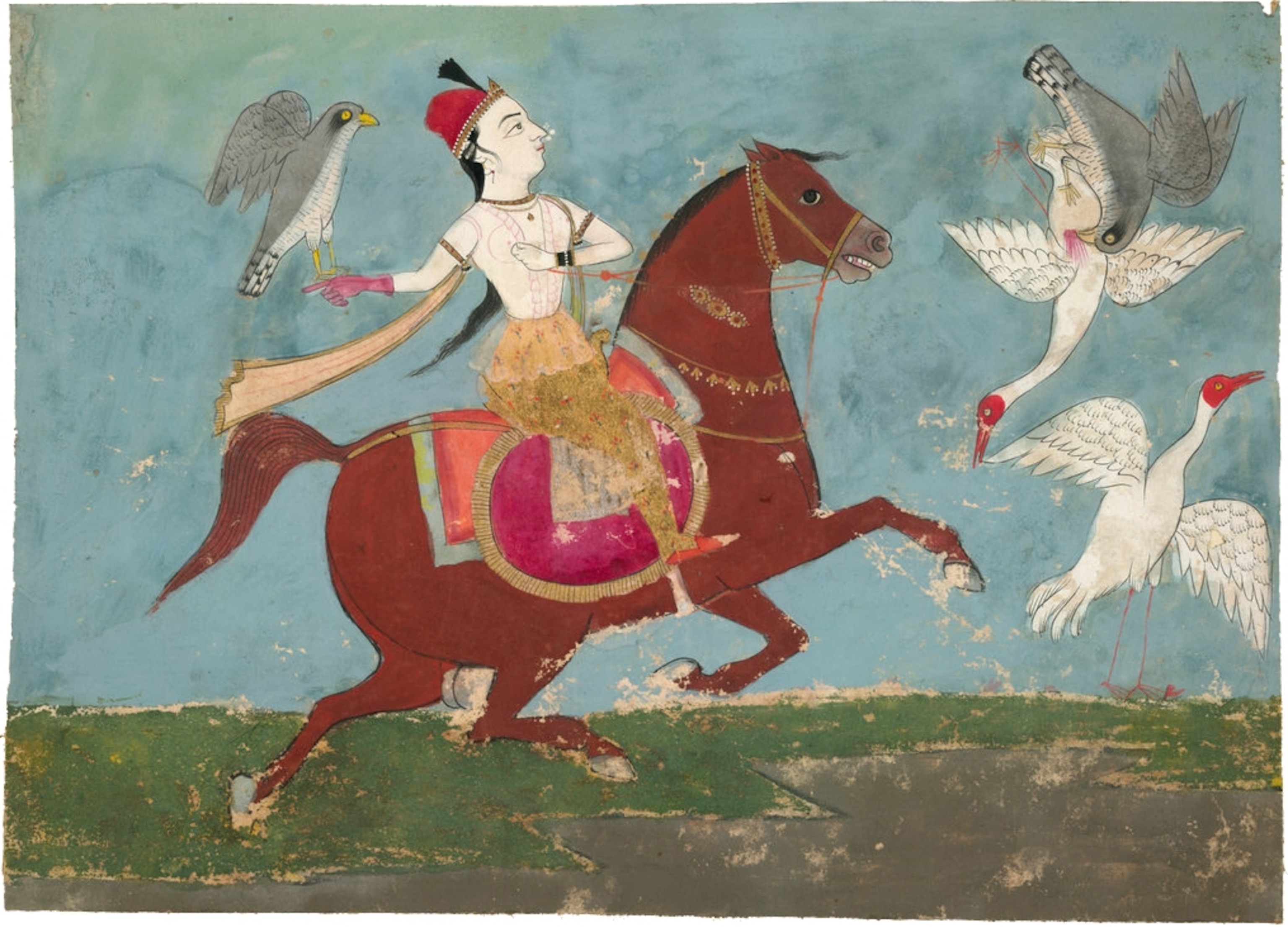
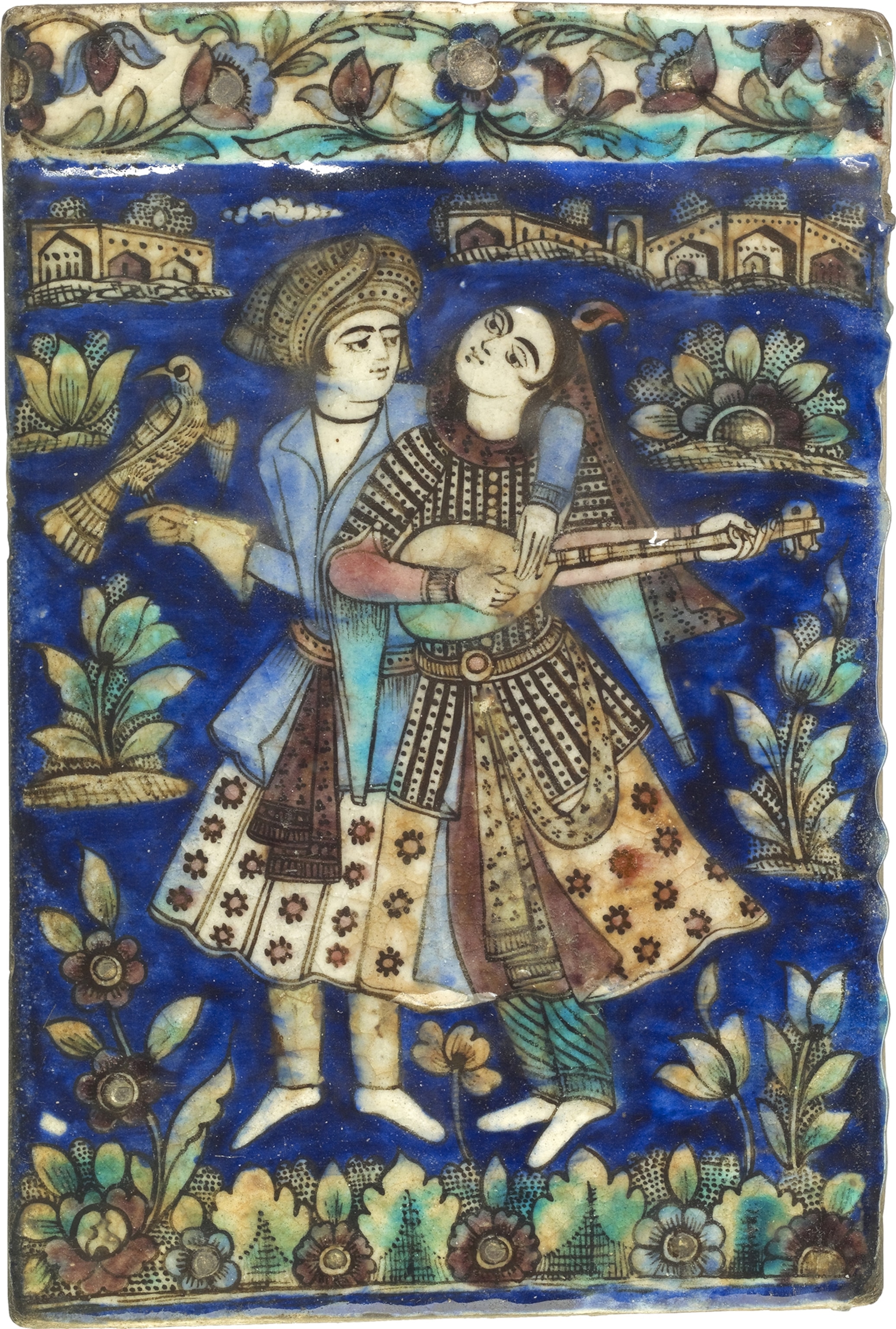
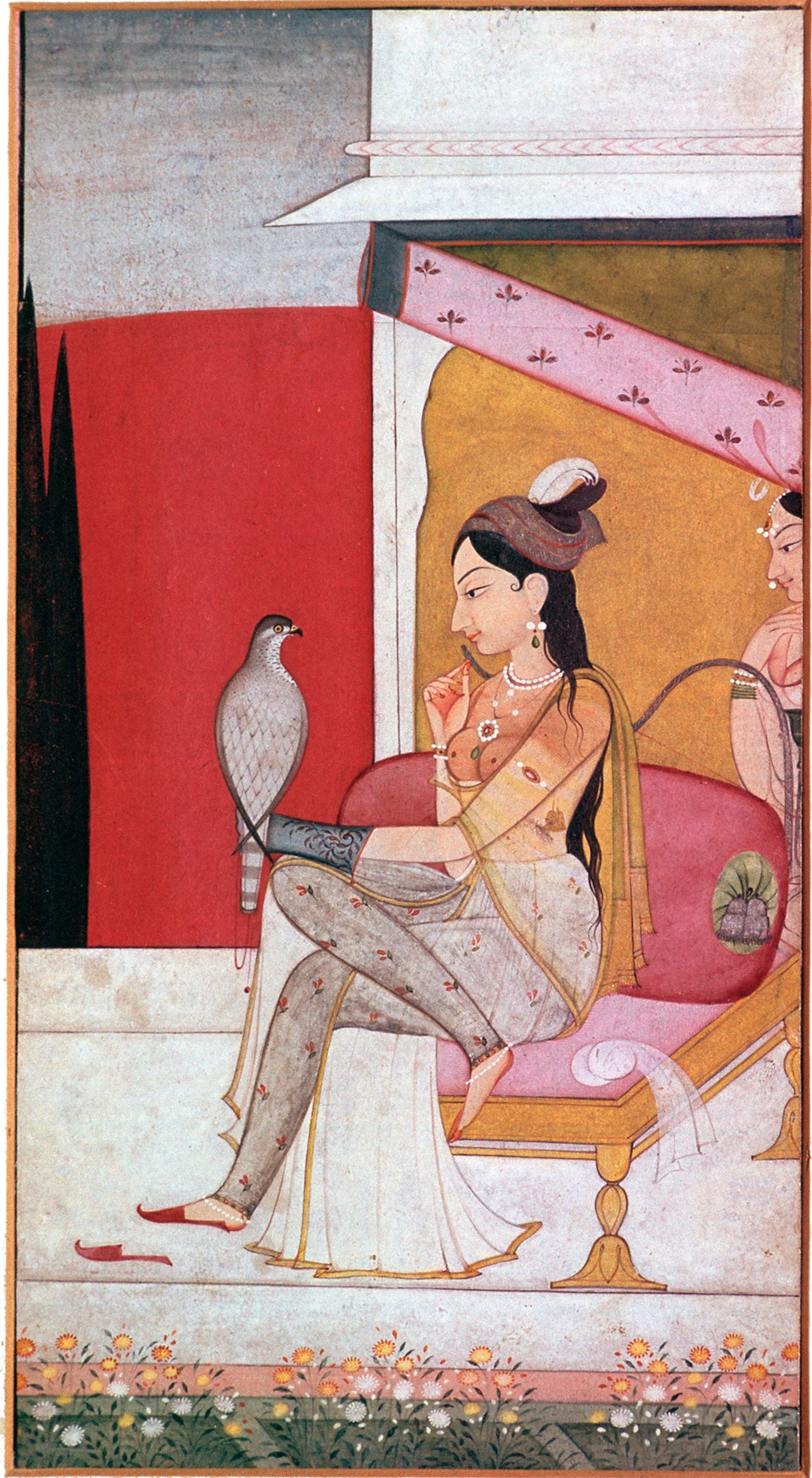
Al Mansouri too says she was not the first woman from her family to break in. “My cousin, in her sixties, is an expert in falconry, and she learned her methods and secrets from two uncles,” she says. (One was Al Mansouri's father.) “She often took me with her on hunting trips.”
Woman on a Mission
But it wasn’t enough to be visible. Al Mansouri wanted to do more. Her mission became teaching falconry to girls, which she began in 2016 at the Abu Dhabi Falconers Club. When she offered classes, 50 women promptly signed up. So far, she's trained nearly 150 women and 70 girls.
Now “everyone wants to educate their daughters even before their sons in falconry,” she says, “and society has become more accepting of women’s participation in this ancient sport.”
Today women take part in competitions and festivals, including the International Festival of Falconry, which launched in 1976.
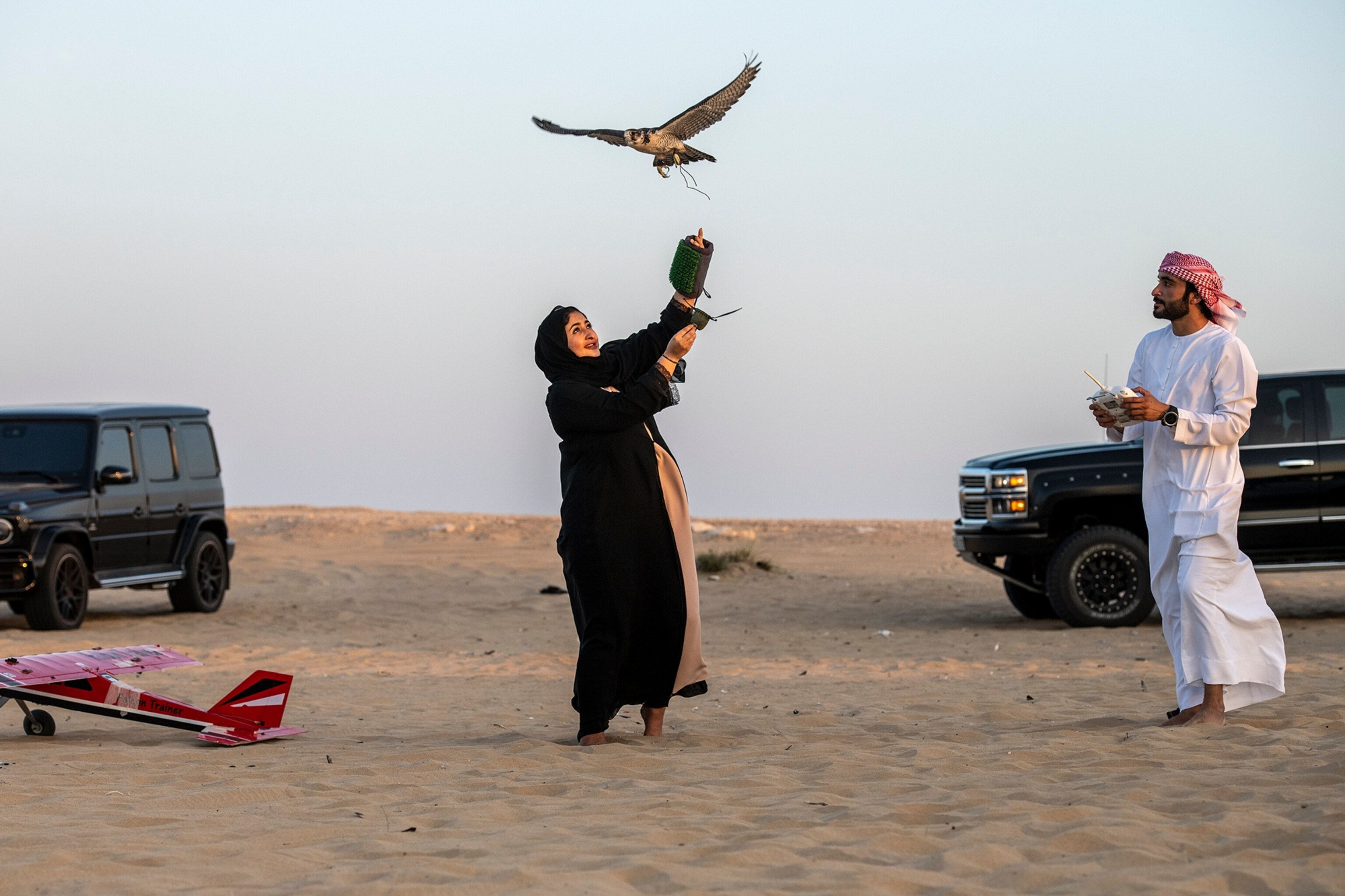
The legacy that Al Mansouri is keen to preserve goes beyond ensuring that women have a place in the sport. Conservation is integral to her work and to other equally committed falconers.
The UAE has made strides at a time when several falcon species face threats from habitat loss and illegal wildlife trading. (Read more about falcon conservation in the UAE.)
Preserving a legacy
UAE falconers now fly only captive-bred birds for racing and hunting demonstrations, and hunting live prey with falcons is prohibited except by special permit in certain areas.
In 2002, to further discourage the trafficking of illegally captured birds, the UAE began issuing falcon “passports” detailing their origins. Several countries, including Saudi Arabia, followed suit.
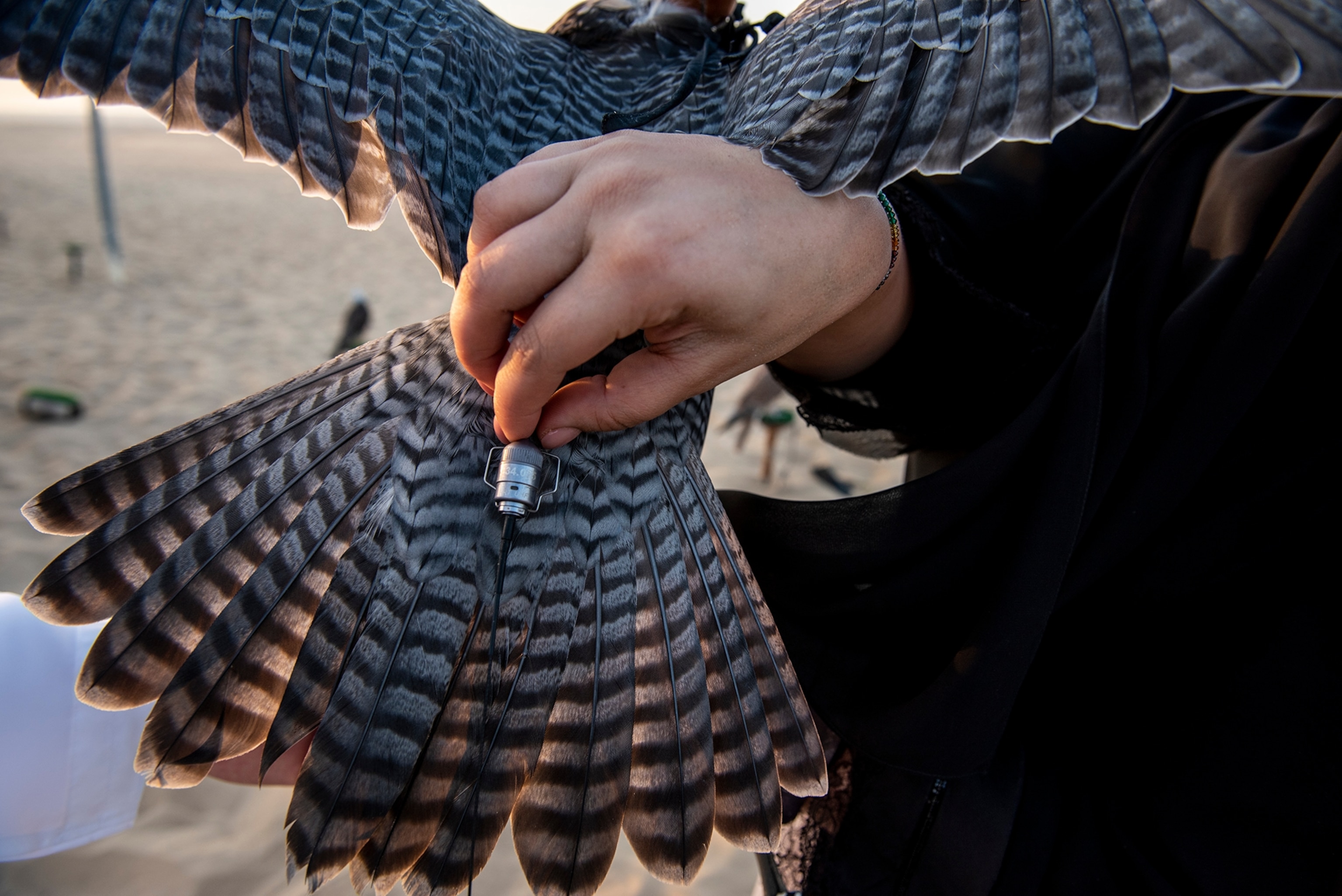
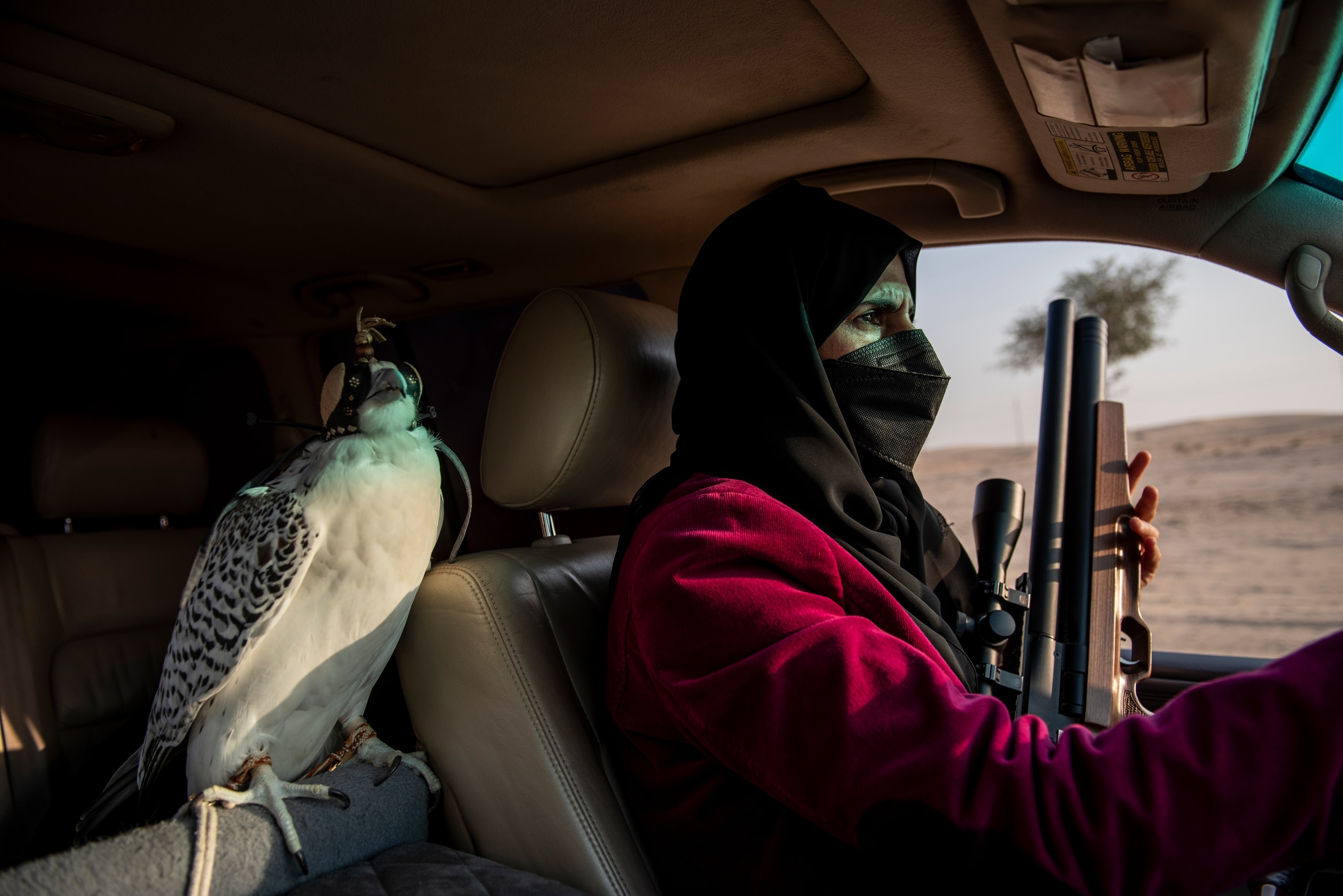
The UAE reinforced its pivotal role with the 1999 opening of the largest falcon hospital in the world, whose training programs draw students from more than 42 countries. “The UAE is a global model for falconry, not only in terms of veterinary medicine related to the care of the birds but also in terms of conservation and population maintenance through breeding,” says Margit Muller, executive director of the Abu Dhabi Falcon Hospital.
In offering tours to local schools, “our goal is for the youth first to learn and love the sport, so that they’ll pass their knowledge on,” says Muller, who has been in the city since 2001.
The time-honored tradition has become a profitable engine sustained by annual competitions and festivals, such as the President’s Cup Falcon Competitions in Abu Dhabi and the Fazza Championship for Falconry in Dubai.
'Your Falcon Is Your Brother'
As dedicated as Al Mansouri is to her mission, she never forgets a lesson she learned at her father’s side. “Your falcon is your brother,” she recalls. “He’s more than just a hunting bird; he is a being that should be appreciated.”
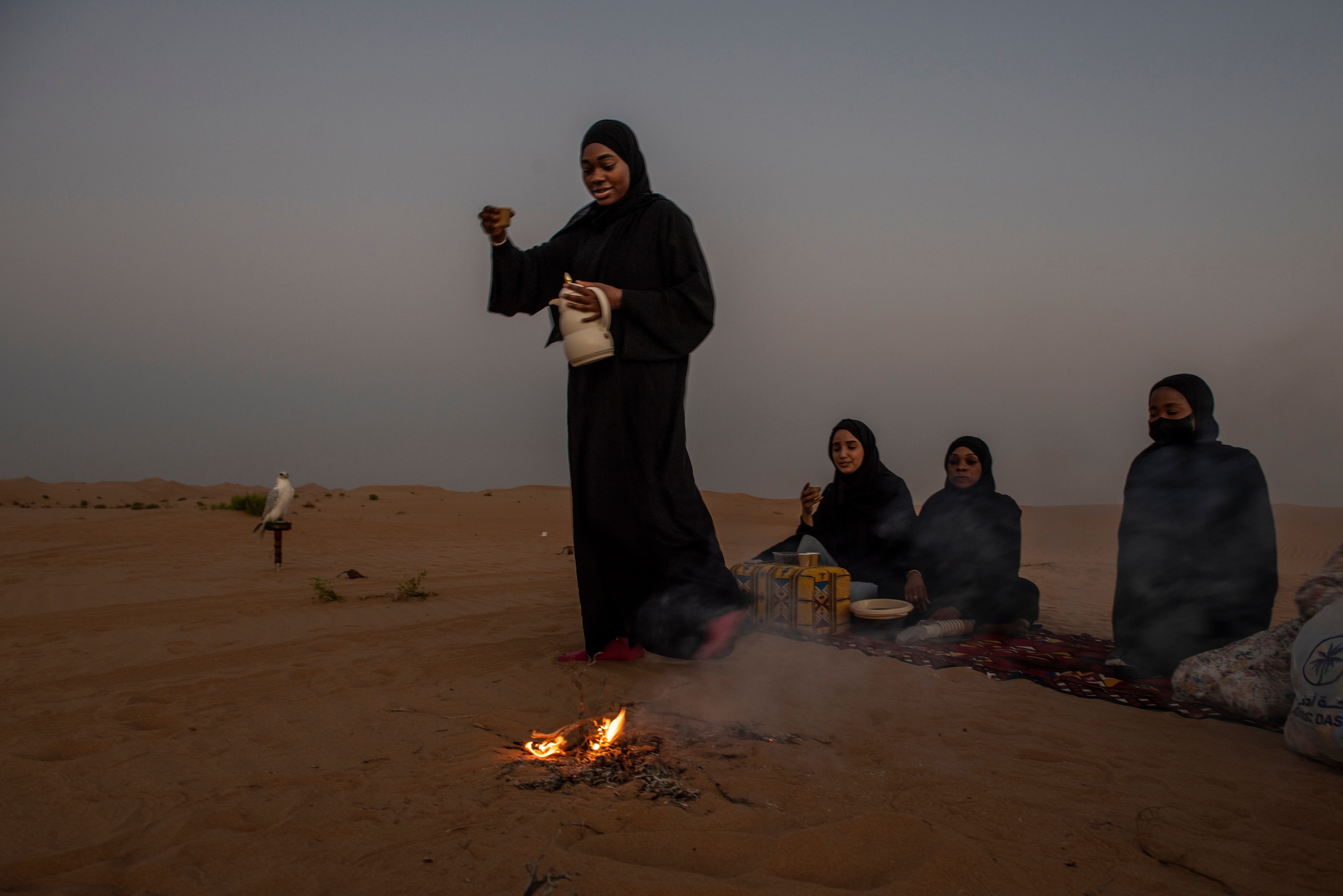
In the desert twilight, Al Mansouri lights a campfire and soon the rich aroma of Arabic coffee fills the air. She finishes her cup, walks to her waiting falcon and lifts off its hood. She raises her hand for the bird to take its place on her arm, and in a moment the falcon takes flight.
The falconer swings a lure in a wide arc around her—a rope with a bustard wing tied at the end. The falcon takes aim and swoops in. At the last second Al Mansouri jerks the lure away. After a couple more tries, she allows the falcon to capture the lure and then quickly replaces it with meat—usually a quail or pigeon breast.
Osha’s piercing eyes watch all her mother does—both her movements and her stillness—as she handles her obedient falcon. They don’t need words to teach and learn the fundamentals of their ancient craft.
This story was adapted from the Arabic edition of National Geographic.



